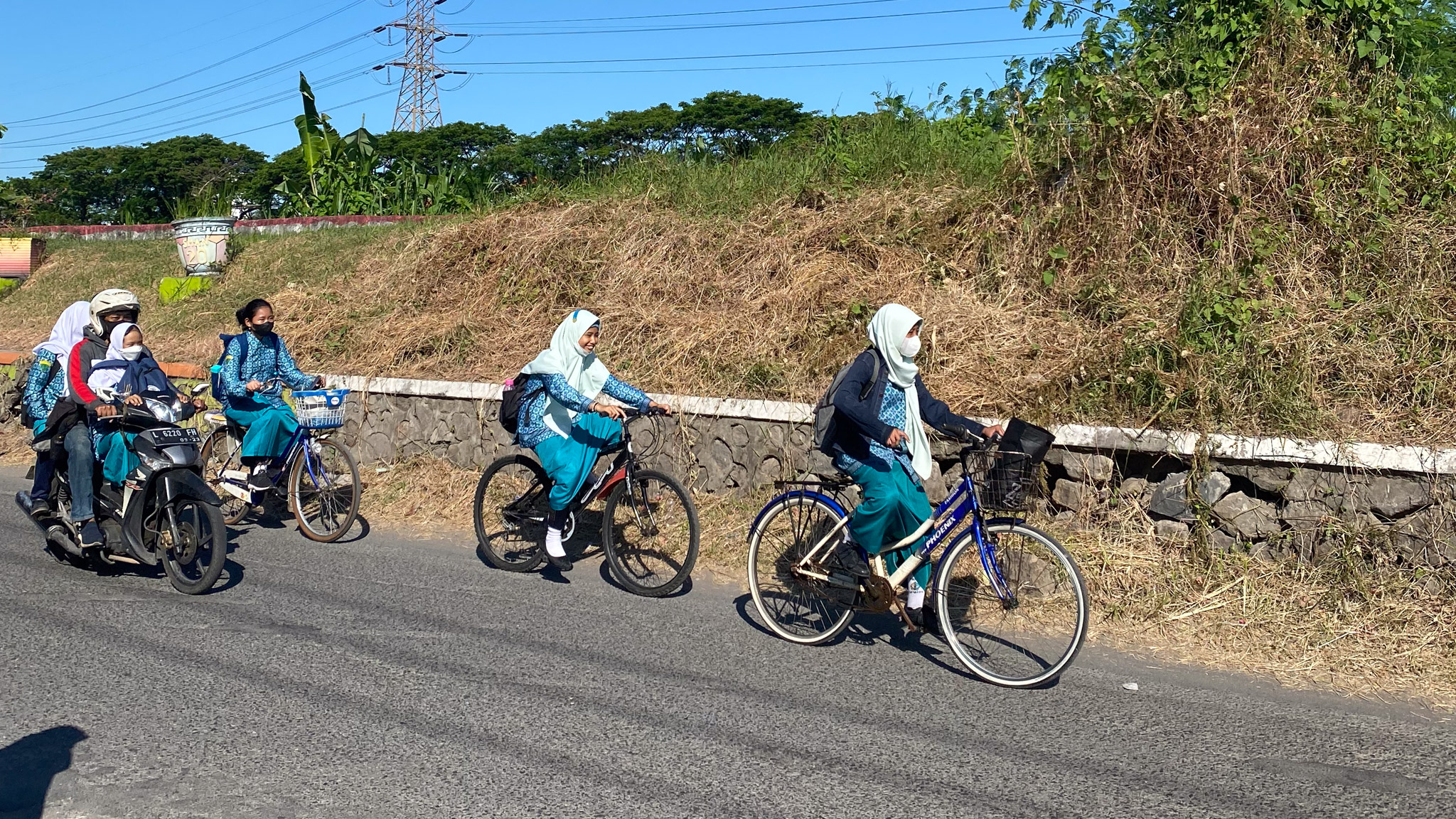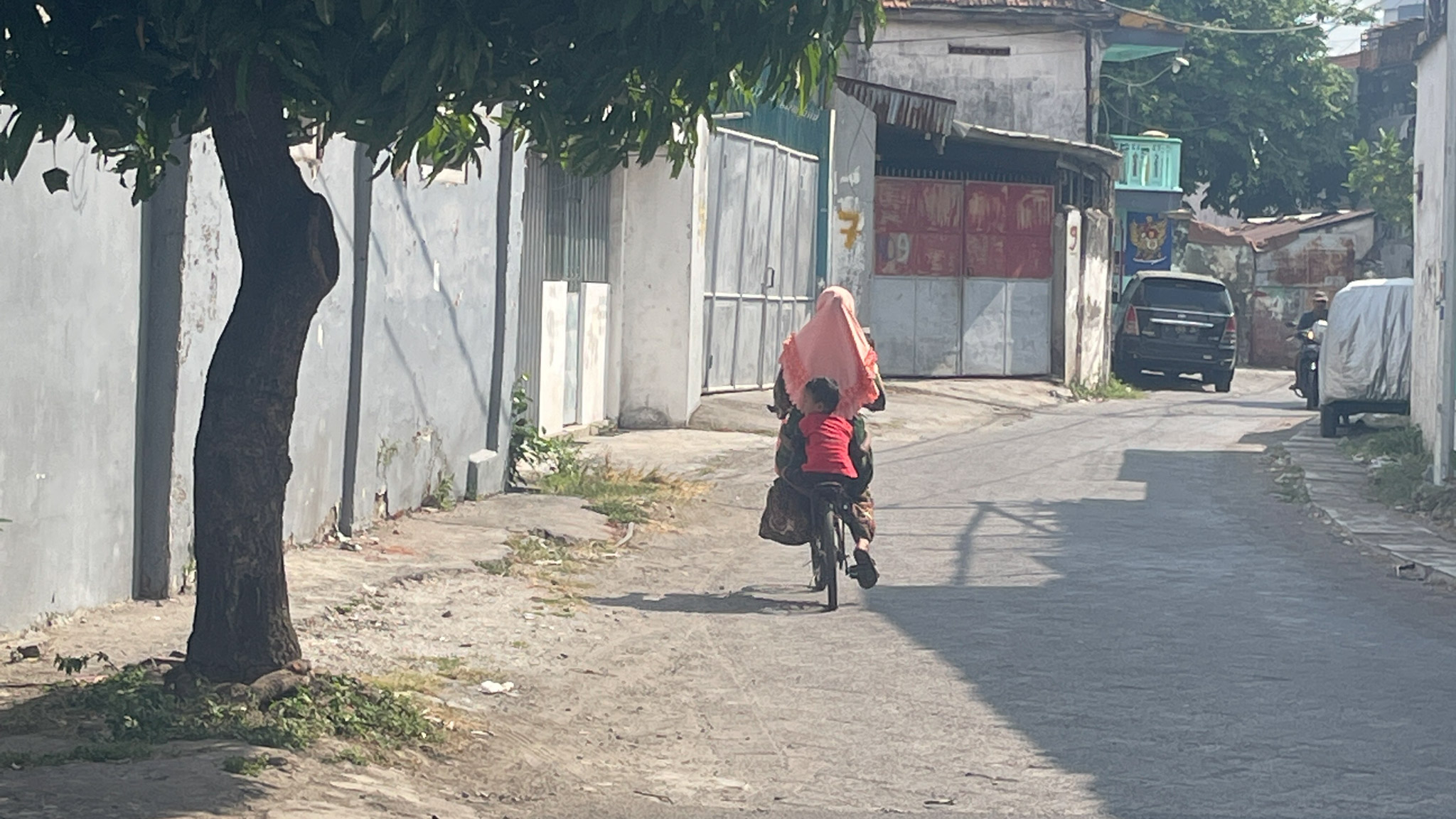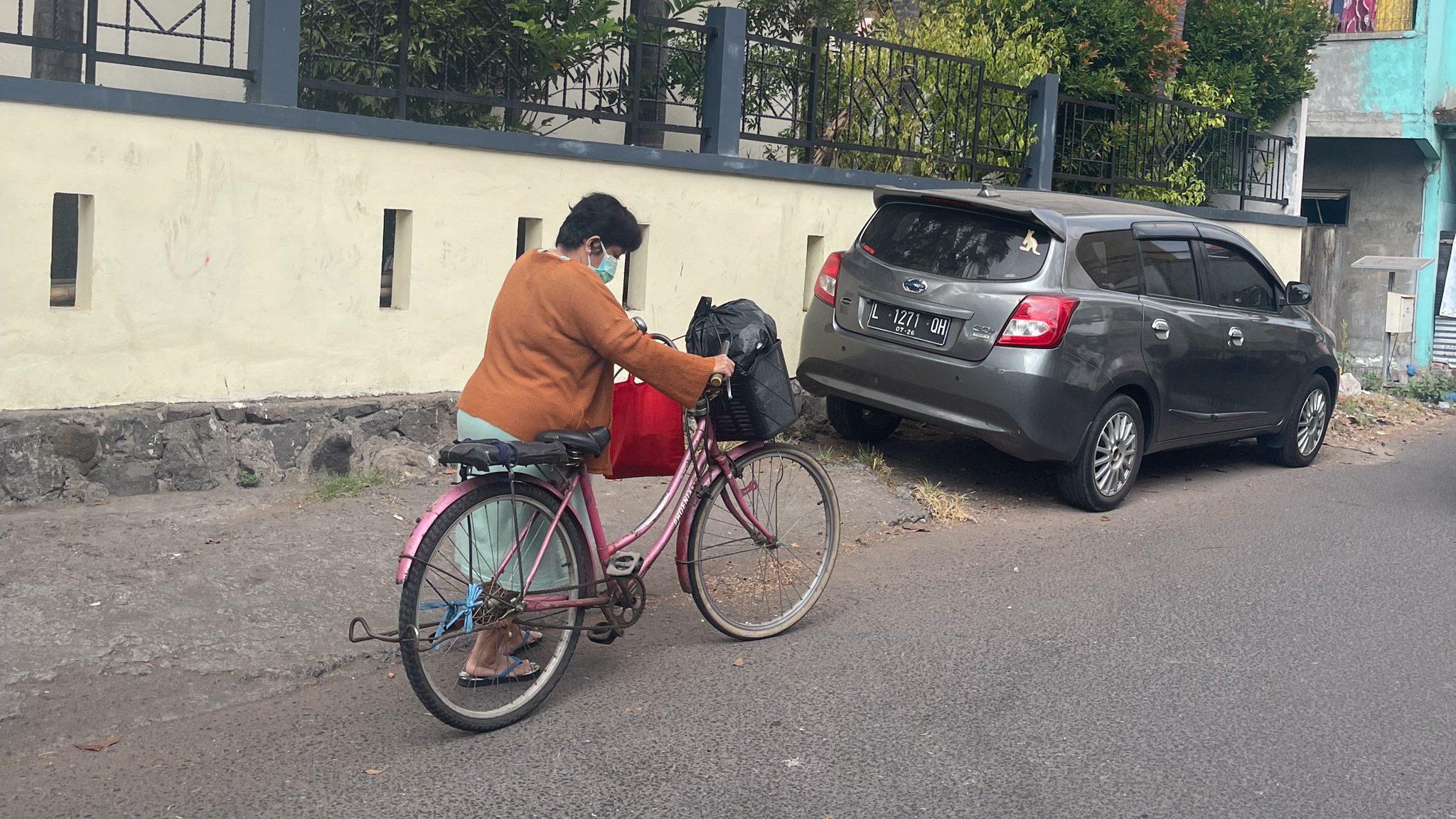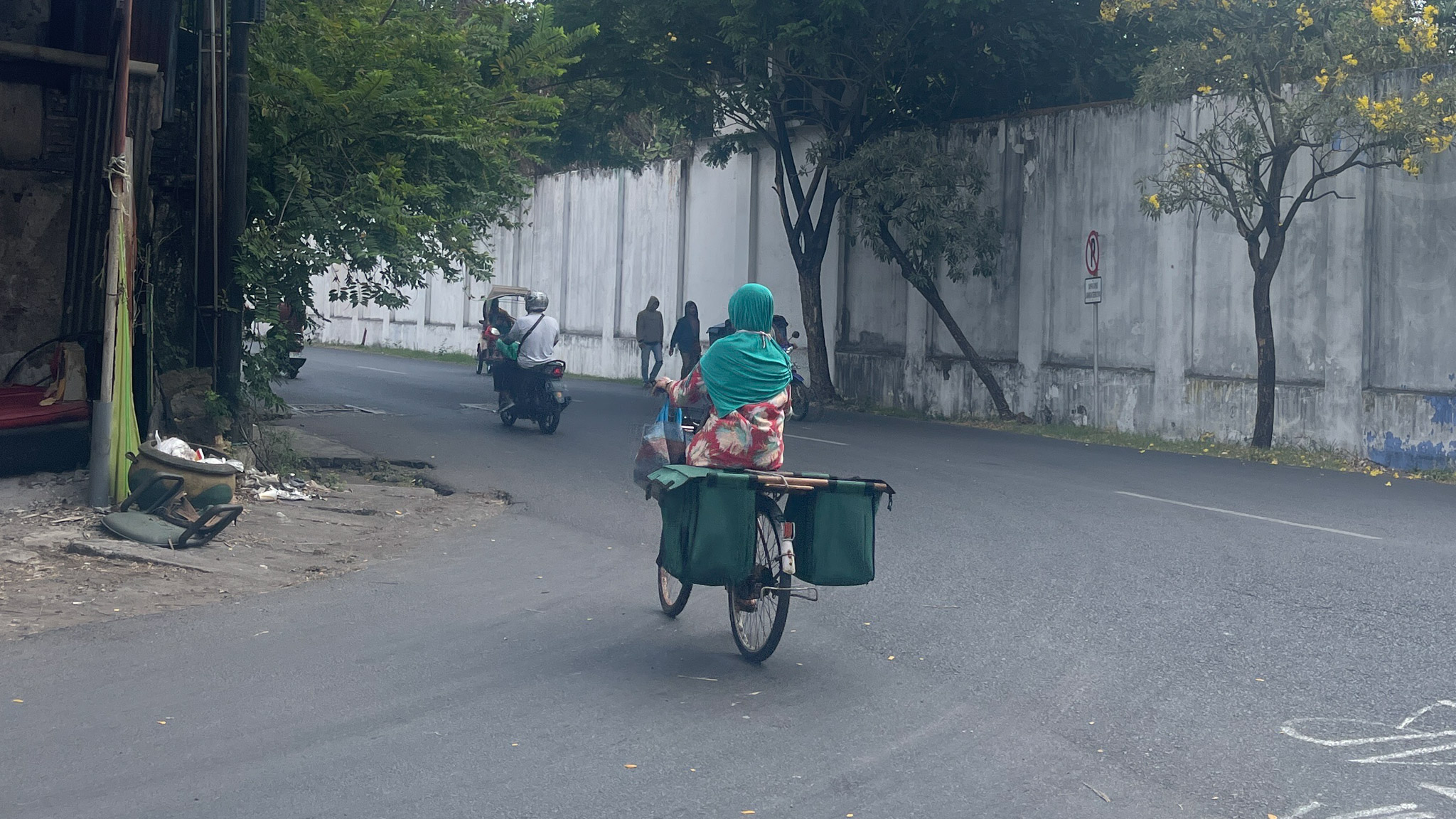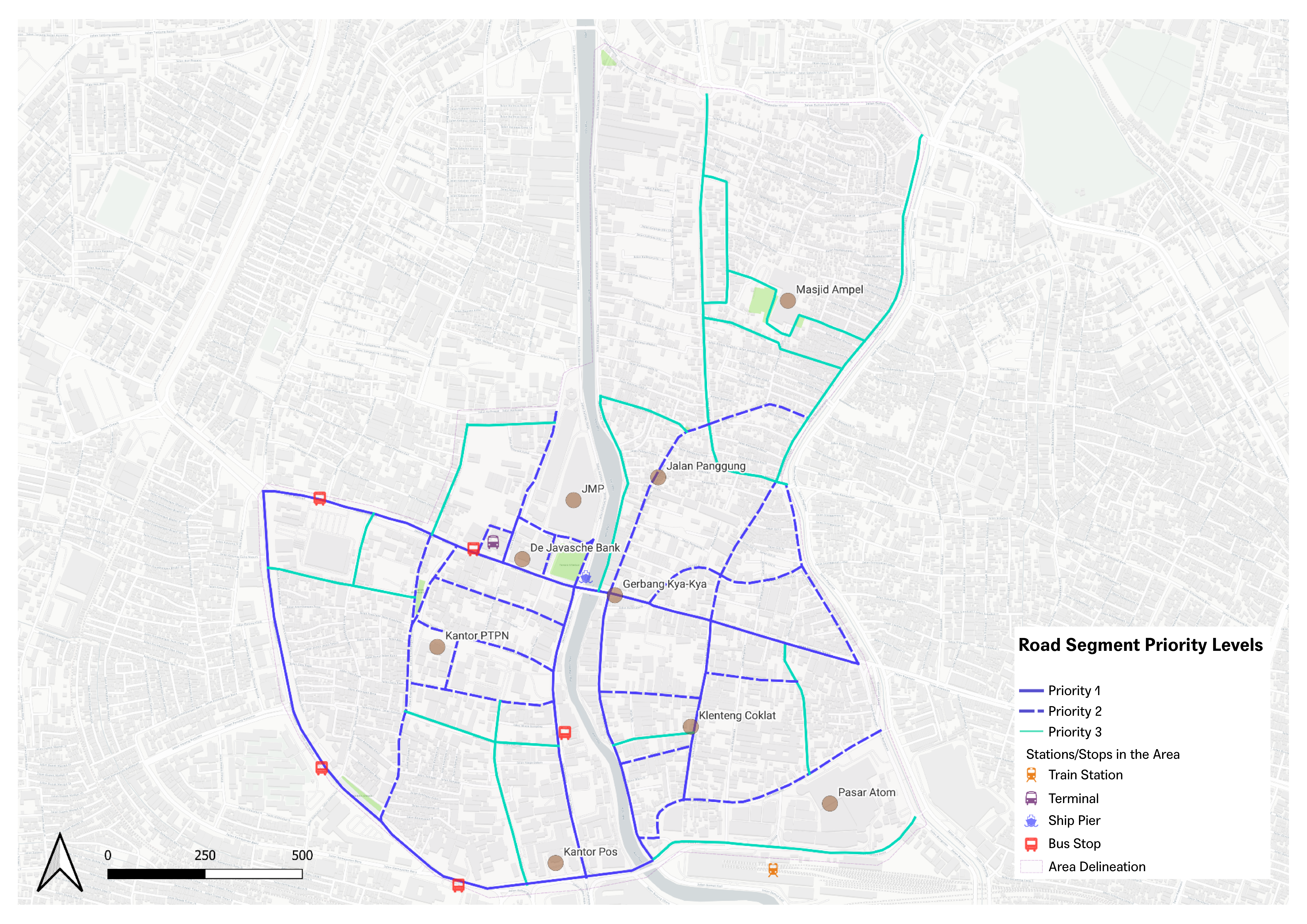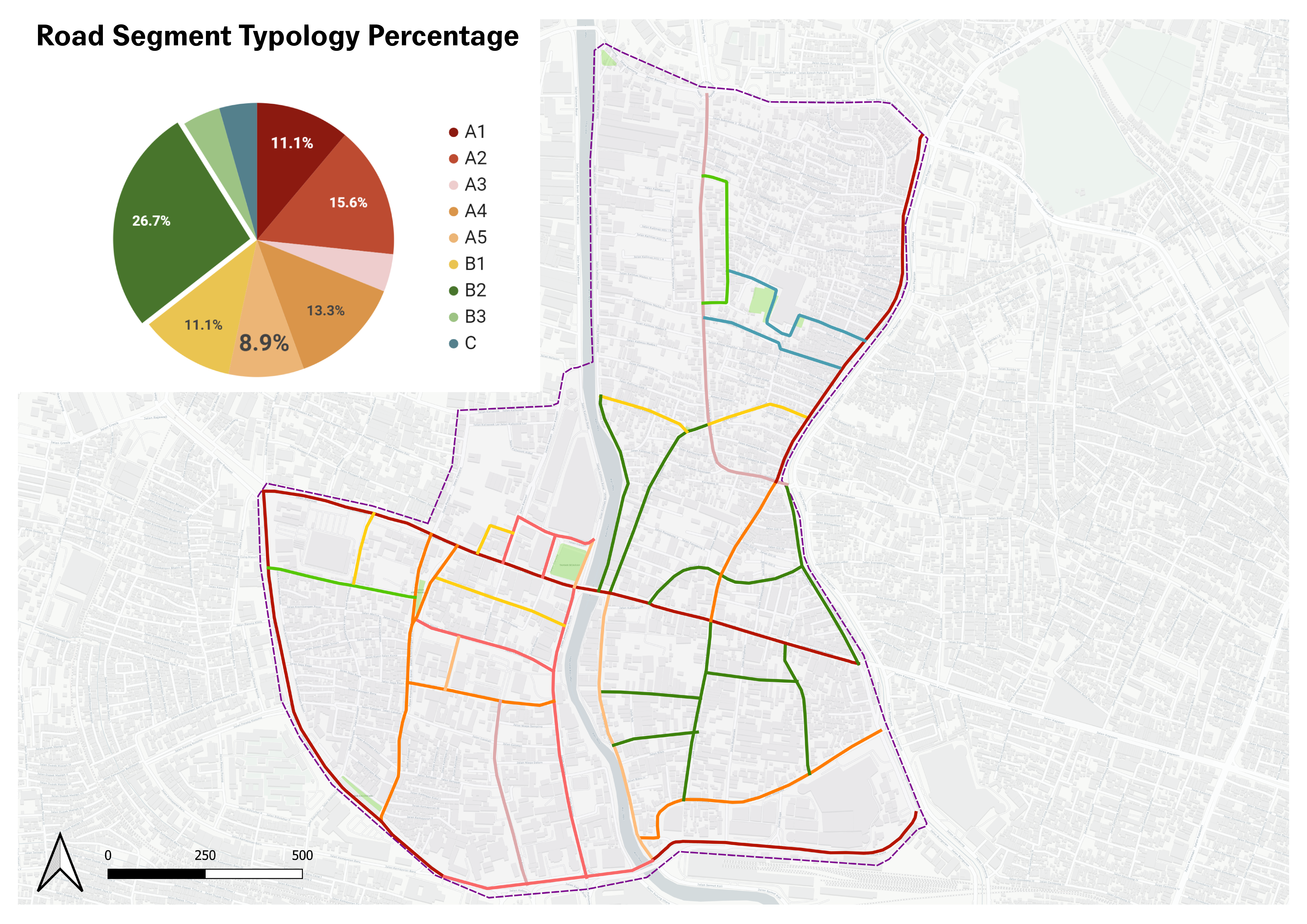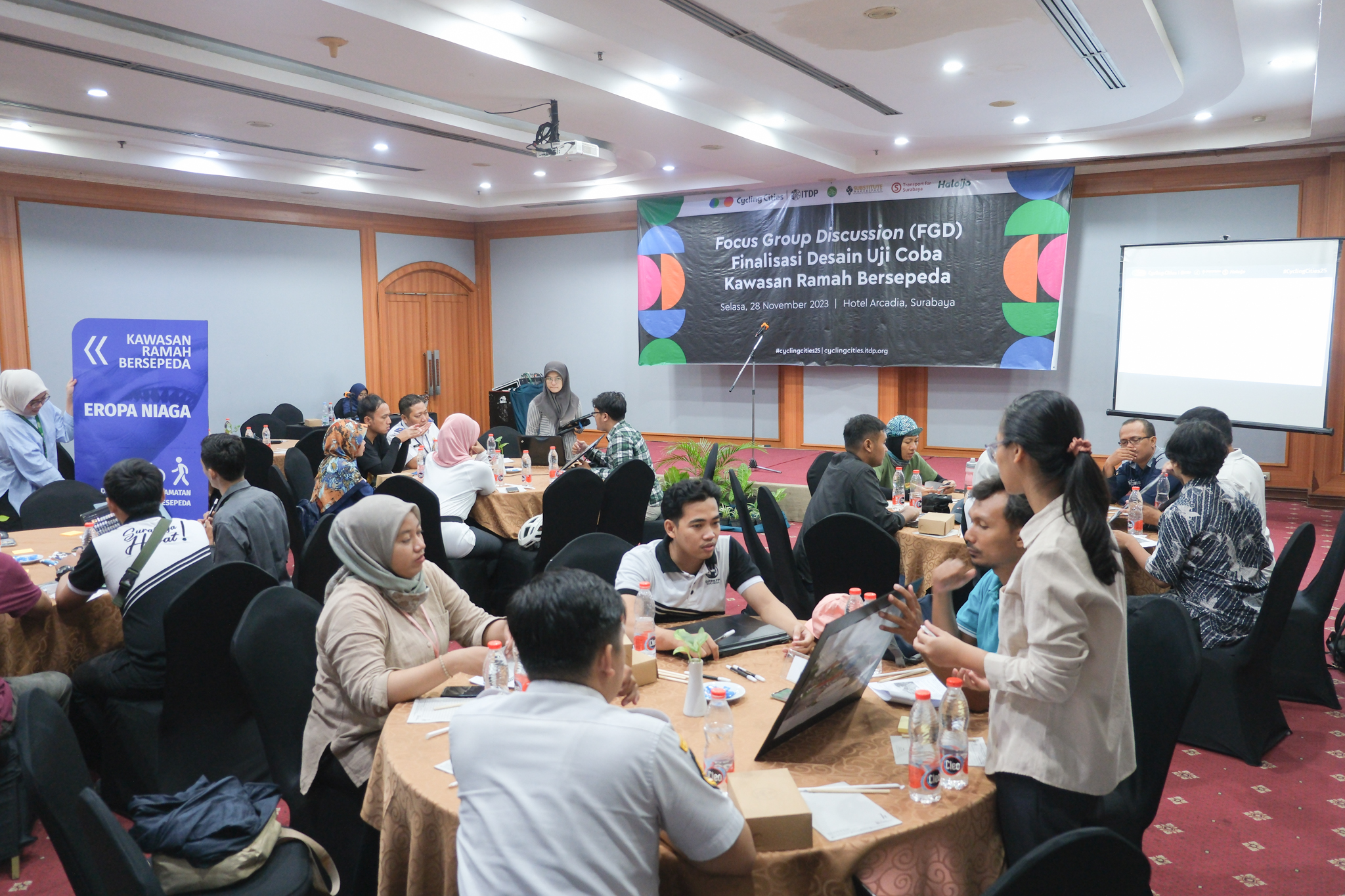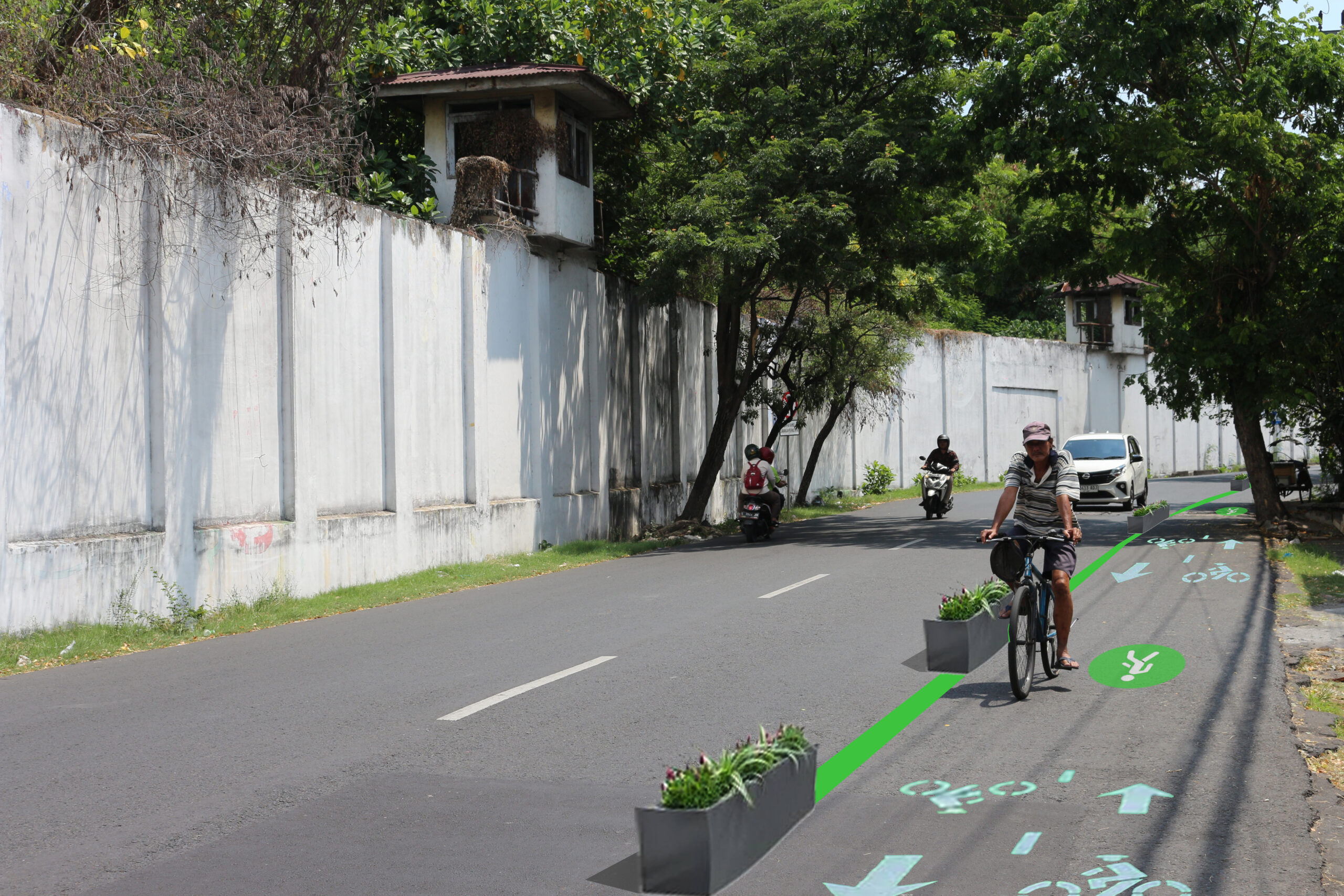December 13, 2024
Where Are the Bicycles in Surabaya’s Old Town?
By Ciptaghani Antasaputra, Sr. Transport & Design Engineering Associate ITDP Indonesia
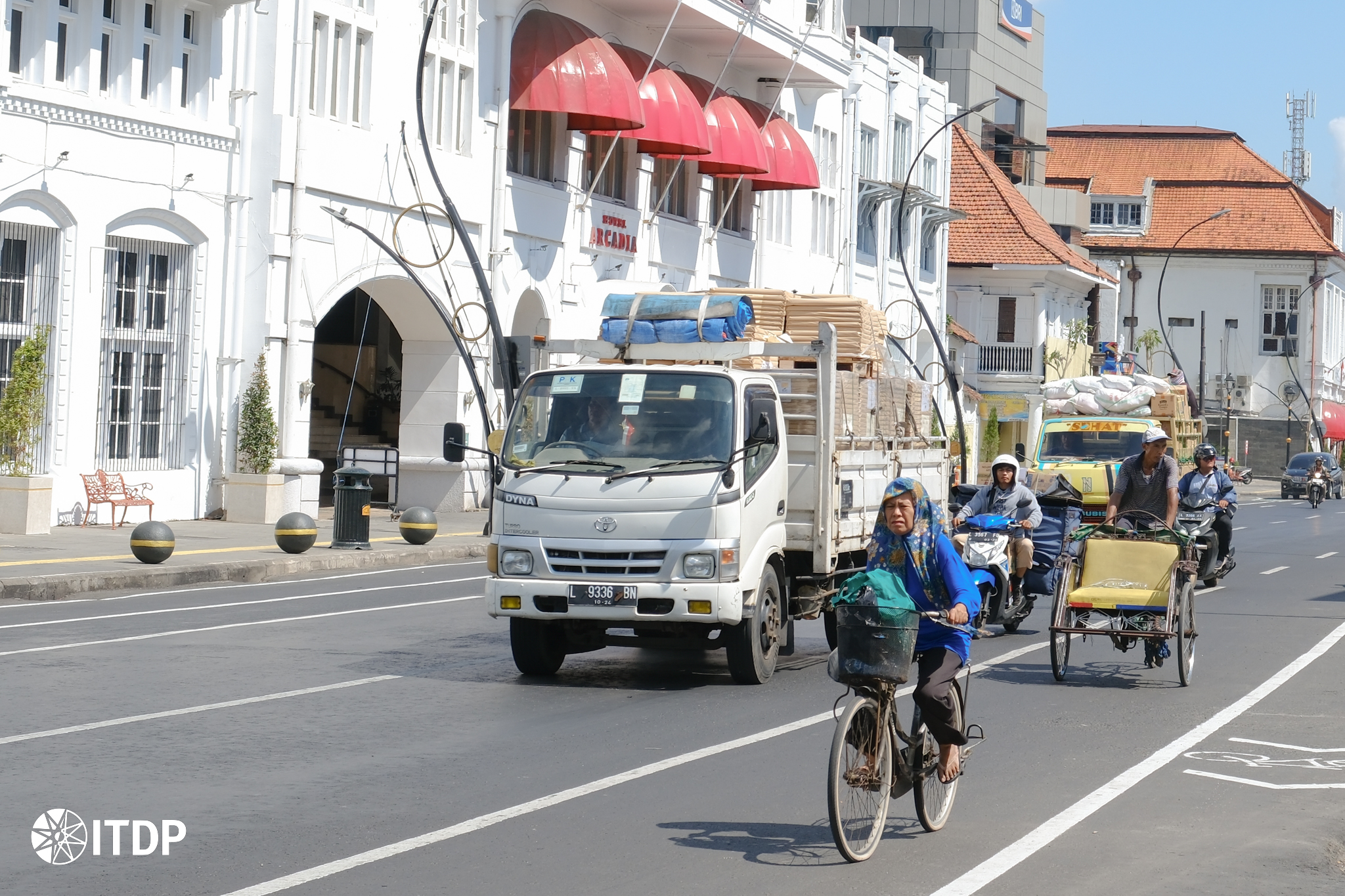
In Surabaya, cycling is not only seen as a recreational activity but has also become an essential part of daily mobility. A survey conducted across four areas by the Surabaya Bike-Friendly City Consortium under the Cycling Cities campaign highlights how bicycles serve as a mode of transport in densely populated areas with diverse spatial layouts, such as residential areas, commercial zones, trade centers, schools, and shopping centers.
In the community, bicycles serve many purposes in everyday life, from elderly individuals heading to the market to adults (particularly women) going to sell goods, visiting healthcare centers, or carrying groceries. Many children also use bicycles to commute to school, mainly due to the short distance from their homes.
One prominent area is Kota Lama, a 128-hectare district with high mobility and mixed land use, where approximately 60% of the space is occupied by residential areas and trade-related activities.
According to a cyclist counting survey by the Surabaya Bike-Friendly City Consortium Team, around 40 cyclists pass through the Kota Lama area per hour during peak hours, underscoring the bicycle’s importance as a transportation mode in the area.
Tourism also adds value to the district. Three-wheeled bicycles, like rickshaws and cargo bikes, are commonly used by both tourists and locals to meet their daily mobility needs.
Despite this, cycling infrastructure in Surabaya remains limited to main roads, while smaller streets lack adequate facilities. This shows that the right to safe spaces for cyclists has not yet been fully met, forcing them to share roads with motorized vehicles, which increases safety risks.
This situation emphasizes the need for more focus on inclusive and equitable cycling infrastructure, particularly in areas with high cycling activity. Improved infrastructure would make cycling a safer, more comfortable, and sustainable transportation option.
Cycling Cities Campaign: Towards a Bike-Friendly Surabaya
Cycling Cities is a global campaign by ITDP designed to provide tools for various stakeholders to make cycling a safe and affordable transportation option in cities worldwide. Through the Cycling Cities campaign, the “Towards Bike-Friendly Surabaya” program, involving the Surabaya Bike-Friendly City Consortium Team (consisting of SubCyclist, Substitute Makerspace, FDTS/Transport for Surabaya, and Haloijo), recommends the development of neighborhood-based cycling infrastructure. Kota Lama is one of the areas considered to have a high urgency to be developed as a bike-friendly areas. This step aligns with strategic plans in the Regional Medium-Term Development Plan, the Regional Spatial Planning Plan, and government policies to revitalize Kota Lama as a sustainable tourism area.
The main criteria supporting this priority include:
- Land-use diversity, such as residential, commercial, and service areas.
- Access to essential public facilities, such as markets, schools, and health centers.
- Connectivity with primary cycling routes to support inter-area mobility.
- Integration with public transport services, enabling multimodal travel.
- Strategic access to the city center, supporting Kota Lama’s role as a hub for activity and tourism.
Additionally, based on the Recommendations for Improving Connectivity and Accessibility in Surabaya’s Old Town Area, the development of the area also considers the level of vulnerability for active mobility (pedestrians and cyclists) and the level of traffic stress (LTS). This approach ensures that the developed areas are not only functional but also support the safety and comfort of road users. As part of this study, an analysis of 43 road segments led to the following recommendations:
- 53% Complete Street: Streets that are friendly to pedestrians, cyclists, and public transport, with designs that prioritize safety and comfort.
- 42% Shared Street: Streets shared by all modes of transportation with specific rules to ensure safety.
- 4% Pedestrian & Bicycle Only: Streets exclusively for pedestrians and cyclists, free from motor vehicles.
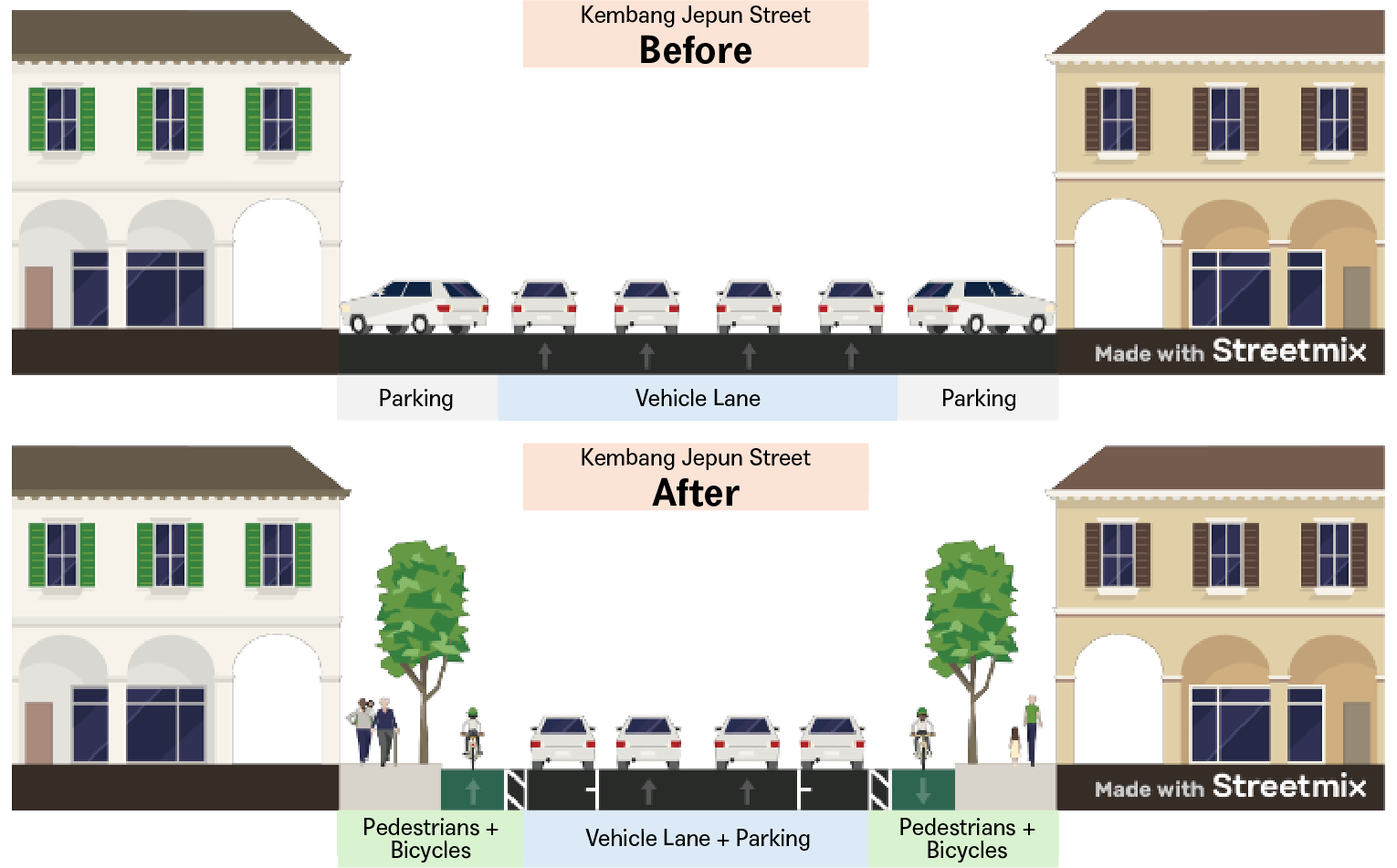
In addition to official government programs, the development of bike-friendly areas can also begin with community-led initiatives using tactical urbanism. This approach allows for the quick, simple, and cost-effective redesign of urban spaces (including cycling infrastructure) through temporary interventions using materials that are easily accessible or available to the community. Tactical urbanism serves as a platform to test designs, assess their impact, and encourage permanent upgrades by the government.
An example can be seen in Krembangan, a residential area in Kota Lama with a population of about 21,000. Through a series of participatory and collaborative Focus Group Discussions (FGDs), cycling infrastructure designs can be developed with basic materials and quick implementation methods. However, to create a long-term impact, collaboration with the government is necessary to make the designs permanent, improve infrastructure quality, and ensure its sustainability.
From Kota Lama to a Bike-Friendly Surabaya
Beyond Kota Lama, 23 other areas hold the potential to be replicated as bike-friendly areas using the tactical urbanism approach, with the top five priorities being Tunjungan, Ambengan, Peneleh, Pasar Bong, and Tambak Bayan. However, to improve connectivity between these areas, corridor-based network development is essential. While there are currently around 40.6 km of bike lanes along major corridors, safety and comfort for cyclists remain pressing issues. A survey of 170 respondents revealed that 88% felt unsafe using the bike lanes due to interference from motorized vehicles and agreed that protected bike lanes would enhance their sense of security.
To address this, bike lanes must be designed with careful consideration of motor vehicle volume and speed to create safe and inclusive infrastructure. A corridor-based bike network following complete street principles is recommended, with a proposed total length of 67.95 km. This network is planned to be built in five stages over five years, with an estimated annual growth of 10% in bike lane coverage. Once fully implemented, the total bike network length is projected to reach 108 km.
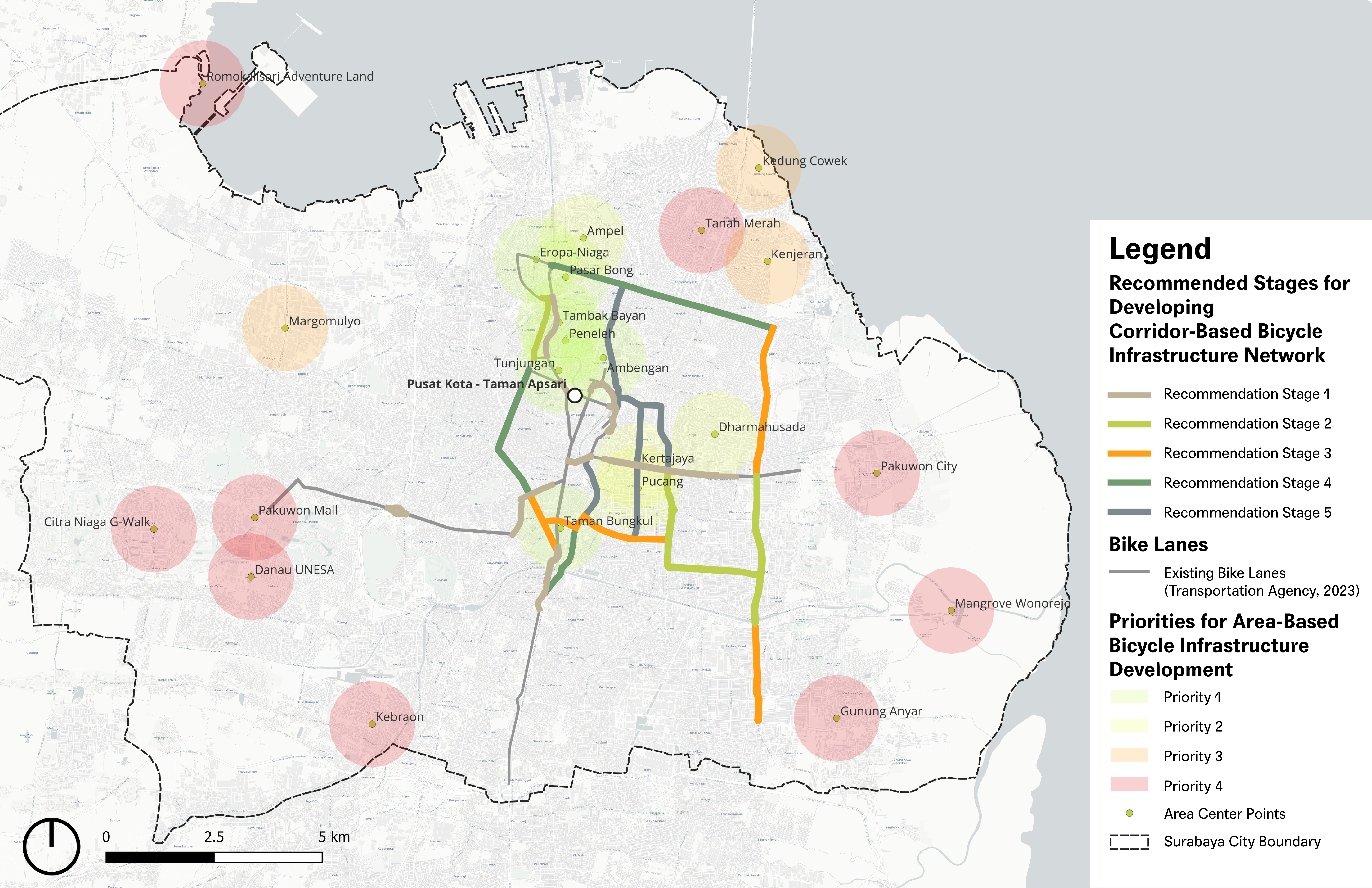

The bike lane planning in Kota Lama marks an essential step toward building sustainable transportation in Surabaya. As a historic area with high mobility activity, Kota Lama has immense potential to serve as a model for bike-friendly, integrated urban zones.
This corridor-based bike network will be complemented by supporting facilities such as bicycle parking facilities, rental systems, and motor vehicle management policies. These measures not only enhance the safety and comfort of cyclists but also accelerate the transition toward more eco-friendly transportation modes.
Kota Lama’s transformation sets a precedent for other areas in Surabaya to develop inclusive cycling ecosystems. Beyond reducing carbon emissions, this initiative aspires to enhance the overall well-being of Surabaya’s residents.
Read the document Recommendations for Improving Connectivity and Accessibility in the Old Town Area of Surabaya and the Roadmap and Conceptual Design for Bicycle Infrastructure Development in Surabaya to learn more about the development of bike-friendly areas in Surabaya.

